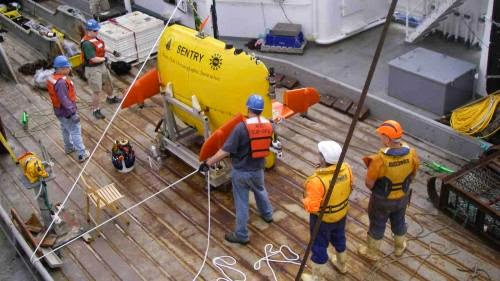
One of the great challenges facing all societies is to achieve a balance between economic growth and environmental integrity. It’s not easy and it requires buy-in from all sectors of society.
As a maritime nation, New Zealand has an Exclusive Economic Zone (EEZ) and Extended Continental Shelf (ECS) totalling about 5.7 million km2. The active geological nature of the area means parts of New Zealand’s EEZ are now of great interest for the mining of seabed minerals. One such area is the Kermadec Volcanic Arc.
In this area, breaks in the submarine crust of the Earth’s surface allow cold sea-water to enter into the rock, where it is heated. This hot water, which contains metals such as gold, copper, silver, zinc and also rare earth elements, is forced out of the ground to form chimney-like hydrothermal vent systems. Given their high metal content, the chimneys and vent sites (collectively called seafloor massive sulphide deposits) are potential sites of future mining activity. Associated with these deposits are well-developed and often unique biological communities that will be damaged or destroyed when mining commences.
Initial assessments of global mineral wealth from the seafloor put the value of these resources well into the trillions of dollars. Increasing world demand for minerals, plus technological advances, have combined to make deep-sea mineral extraction a possibility right now.
New Zealand is likely to consider mining activities within its EEZ in the future. Large areas were licenced for prospecting as far back as 2002 and new legislation, such as the Exclusive Economic Zone and Continental Shelf (Environmental Effects) Act 2012, has been enacted with seabed mining specifically in mind.
Ongoing research, funded by the New Zealand government and by industry, is identifying and characterising the location and extent of mineral deposits. Based on the size and economic potential of mineral deposits, the mining industry suggests that one in every 10, or perhaps one in every 20, seafloor massive sulphide deposits may be economically viable and therefore mineable.
The New Zealand public is generally very aware of environmental issues, both on land and in the sea. There are however, a number of key questions that need to be answered before mining commences so that the mining company/ies, the New Zealand Government and the people of New Zealand all understand and agree to the costs and benefits of this opportunity.
If mining is to commence then it needs to be environmentally sustainable and to cause minimum ecosystem damage. To achieve this we need detailed site-specific and broader regional information about directions and strengths of current flow, and about where the new biological recruits come from (the source populations) and where they go (the sink populations). Because vent sites may act like “stepping stones” for dispersal of animals along a ridge, it is crucially important to understand the impact of mining activity at each site. The loss of an individual site to mining activity may have profound consequences on the stepping stone model of connectivity among vent sites if animals cannot disperse beyond it. Thus, science has an important role to play in the identification of sites to be mined and sites that are not to be mined (what are called “set asides”) because of their biological importance.
It is clear that the mineral wealth of the deep sea is vast and that mining technology has developed to a stage where many mineral deposits are now extractable. It is also clear that this new opportunity to access rare and commercially important metals presents society and resource managers with questions and challenges about the limits and balances of blue growth and the maritime economy. Within New Zealand, further debate is needed so that informed decisions can be made about the balance between exploitation and conservation that we, as a society, wish to pursue.
Note : The above story is based on materials provided by Victoria University










